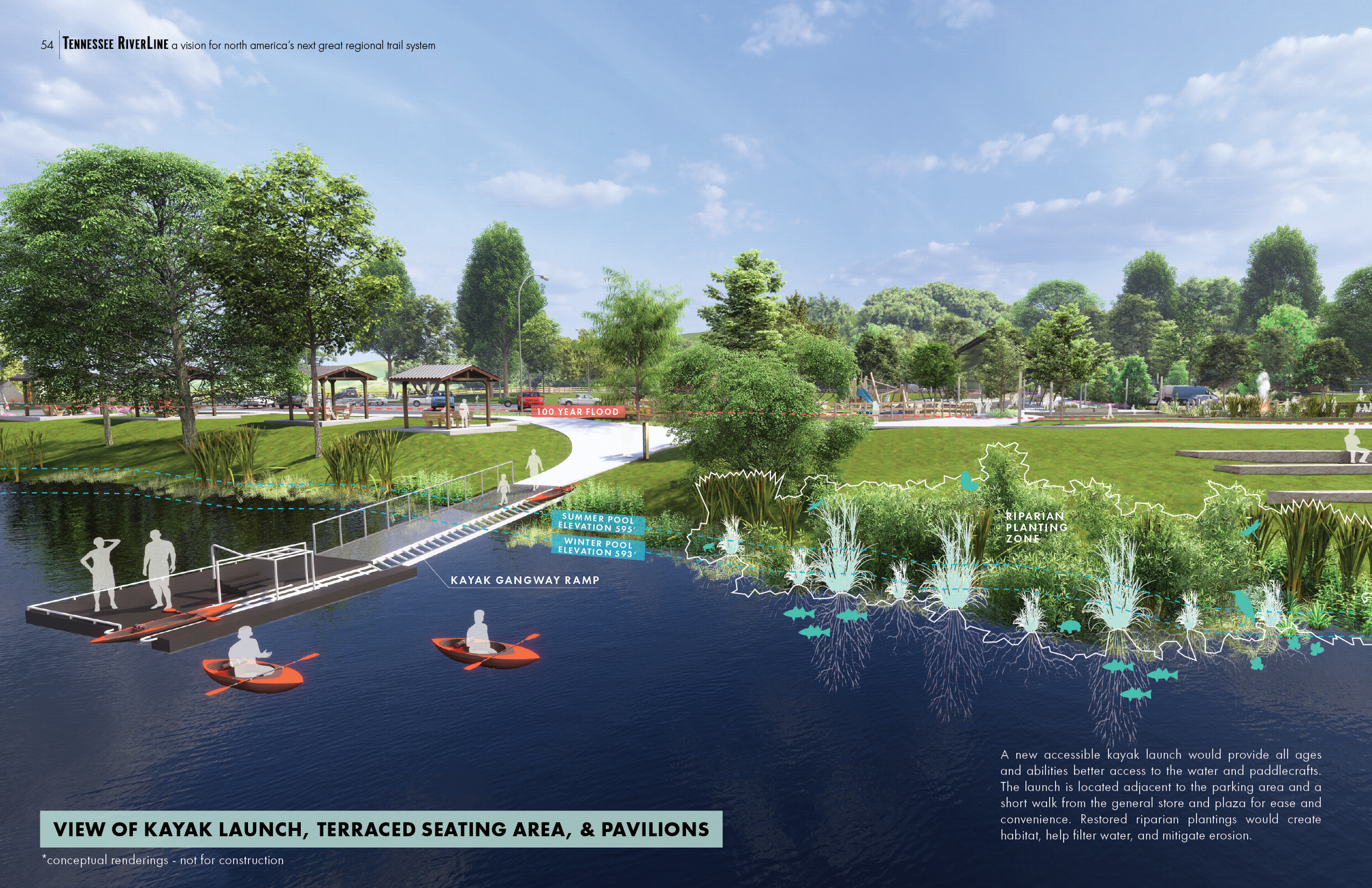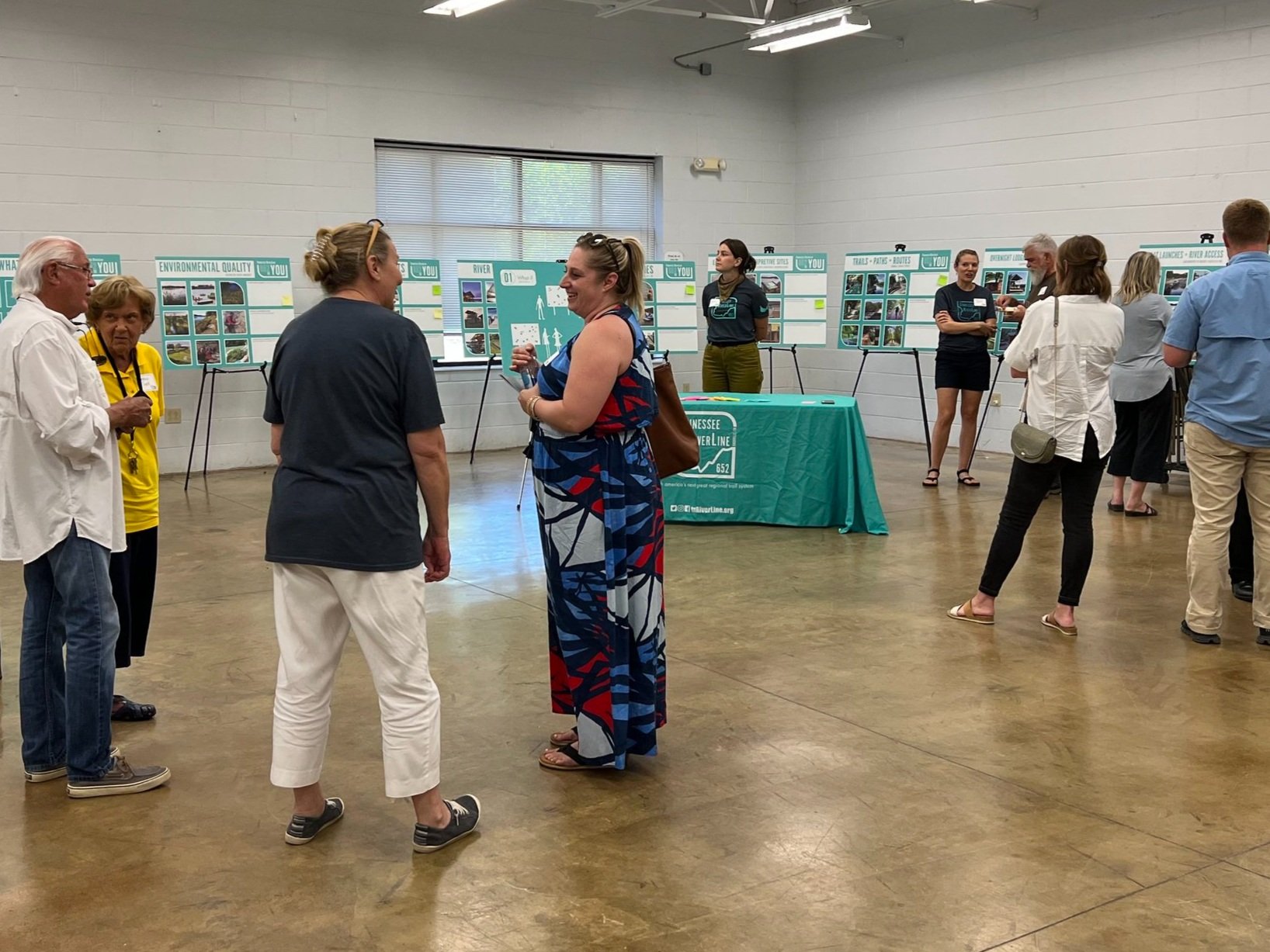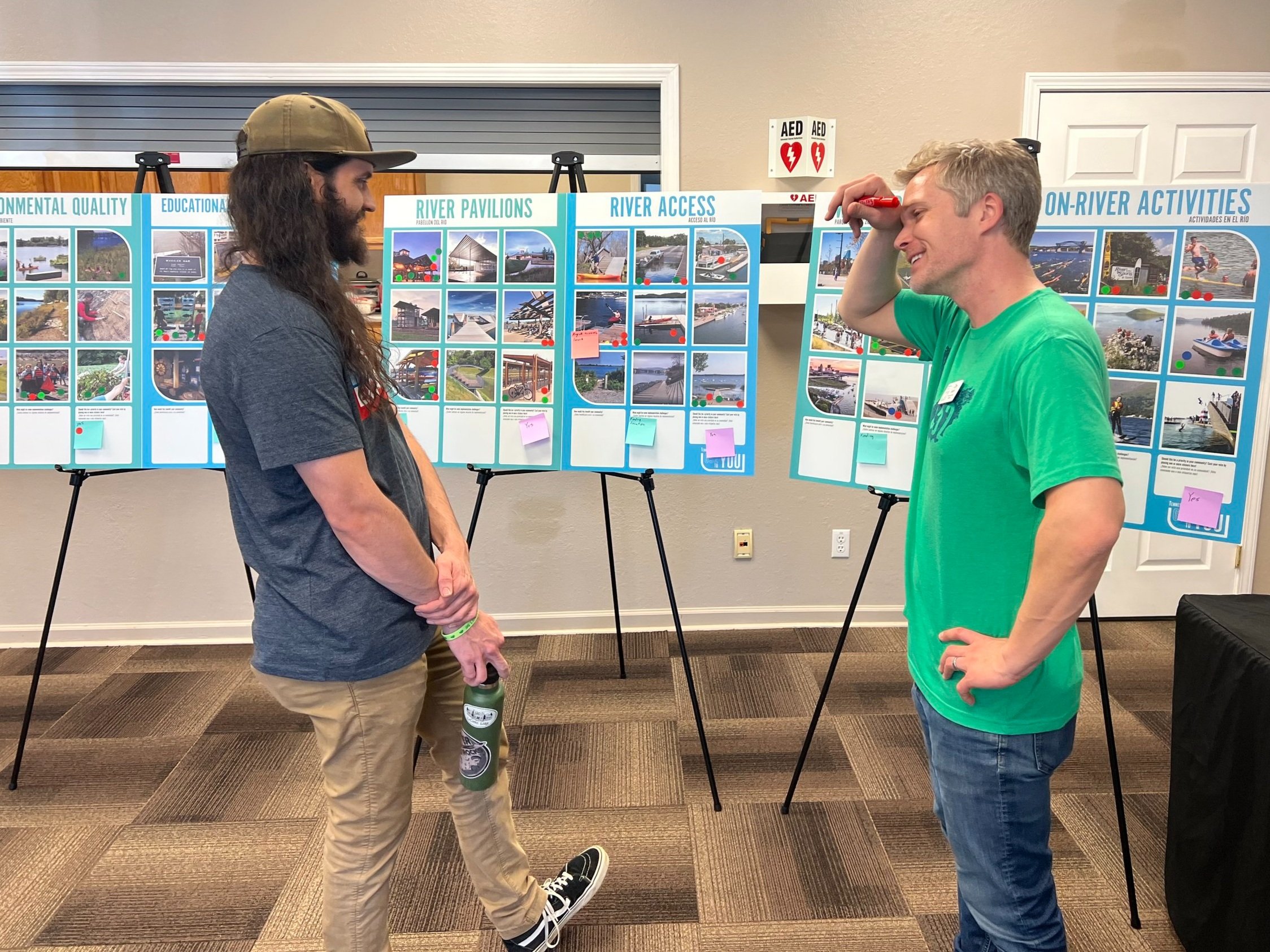Planning & Design
What We Do
The Planning & Design team helps our communities to envision, plan, and implement their portion of the Tennessee RiverLine. Our team is a group of landscape architects and designers with a passion for improving how people engage with the Tennessee River and its surrounding landscape.
We facilitate community engagement efforts, provide conceptual design and planning services, and collaborate on mission-driven research with academic and organizational partners.
Our purpose is to serve our community partners in their pursuit of enhancing their riverfront spaces. To achieve this we use a design process that encourages community participation, is driven by data, and is continually informed by the Tennessee RiverLine’s guiding principles of public health, economic development, equity of access, and environmental stewardship.

































Conceptual Design
Our team offers conceptual design services to RiverTowns communities to help them envision the Tennessee RiverLine in their community and to prepare them for implementation and funding opportunities.
As part of their participation in the RiverTowns program, communities work alongside the Planning & Design team to identify a priority project site for the Planning & Design team to study further. The team then facilitates community engagement, workshops, and surveys to determine what the public needs and wants on the site.
After gathering data, the team performs site inventory and analysis and develops conceptual design plans for the priority project sites. The final deliverable is a Conceptual Design Package that is meant to serve as a resource for funding opportunities. A public exhibit shows community members how their input was incorporated and helps build momentum.
Our team’s most recent conceptual design effort was the USDA RPIC-funded Community Planning Initiative (CPI), in which our Planning & Design team worked with the following RiverTown communities to develop conceptual plans for priority projects in their community.
Guntersville, AL
Community Outreach & Engagement
Engaging with our river communities is critical to the success of the Tennessee RiverLine. The Planning & Design team organizes and facilitates a variety of community engagement techniques that are designed to solicit feedback from a broad group of community members. Our river communities are incredibly diverse so our methods of outreach and engagement must be too.
During the RiverTowns Stage 1 Community Engagement process, we facilitate in-person public workshops where we ask folks to share their input in a variety of ways from adding flags to a large-scale community map, engaging in one-on-one conversation about their river experiences, and sharing their aesthetic preferences through images.
We also solicit feedback through virtual surveys that invite community members to share their input from their phones or computers or through traditional form surveys on paper.
Our team continues to refine and evolve our community outreach and engagement techniques to reach as many community members as possible.














Our Design Process
Our Rivertowns community partners collaborate closely with us throughout the design process. Our partners provide resources and information about their communities that help us understand their relationship with the Tennessee River.
We also gather information from city and county resources and use GIS to layer information and create base maps. We use this data to help our community partners identify a priority project site based on gaps in amenities along the Tennessee River or within their community or region.
After choosing a project site, we conduct community engagement to gather feedback from residents and other stakeholders to understand their needs. Our team also performs a site inventory and analysis of the site, noting opportunities and challenges.
We facilitate a community design workshop and survey to allow community members to give input on the design elements they would like to see on the site. Community feedback is incorporated into a conceptual site plan that we review with the community and finalize with professional renderings.
Once the final concepts are vetted by community leadership, we facilitate a public exhibit to display the plans and gather more feedback. We then get to work on cost estimates and phasing plans to help find funding sources for implementation.








